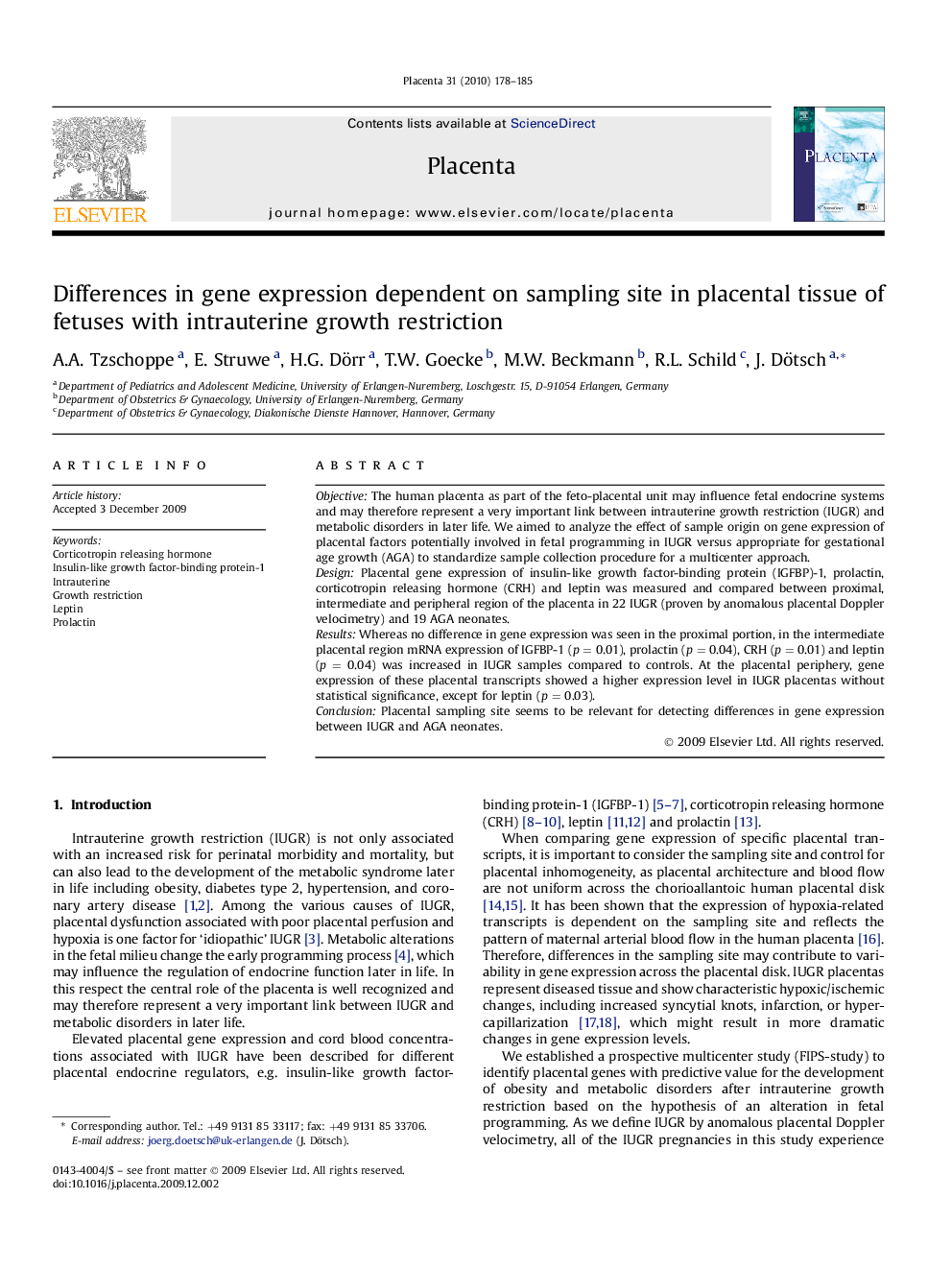| Article ID | Journal | Published Year | Pages | File Type |
|---|---|---|---|---|
| 2789588 | Placenta | 2010 | 8 Pages |
ObjectiveThe human placenta as part of the feto-placental unit may influence fetal endocrine systems and may therefore represent a very important link between intrauterine growth restriction (IUGR) and metabolic disorders in later life. We aimed to analyze the effect of sample origin on gene expression of placental factors potentially involved in fetal programming in IUGR versus appropriate for gestational age growth (AGA) to standardize sample collection procedure for a multicenter approach.DesignPlacental gene expression of insulin-like growth factor-binding protein (IGFBP)-1, prolactin, corticotropin releasing hormone (CRH) and leptin was measured and compared between proximal, intermediate and peripheral region of the placenta in 22 IUGR (proven by anomalous placental Doppler velocimetry) and 19 AGA neonates.ResultsWhereas no difference in gene expression was seen in the proximal portion, in the intermediate placental region mRNA expression of IGFBP-1 (p = 0.01), prolactin (p = 0.04), CRH (p = 0.01) and leptin (p = 0.04) was increased in IUGR samples compared to controls. At the placental periphery, gene expression of these placental transcripts showed a higher expression level in IUGR placentas without statistical significance, except for leptin (p = 0.03).ConclusionPlacental sampling site seems to be relevant for detecting differences in gene expression between IUGR and AGA neonates.
